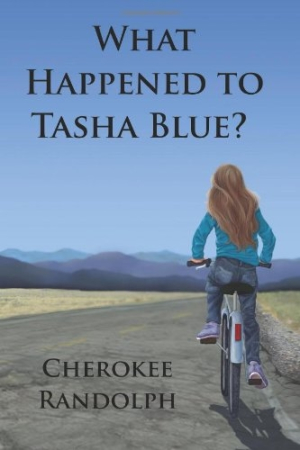What Happened to Tasha Blue?
A crisply written novel, What Happened to Tasha Blue? charts the response of family, friends, and neighbors after the title character, a high-school student, vanishes from the deserted outskirts of a working-class New Mexico town in 1998.
With no signs of foul play and no eyewitnesses, Sheriff Harper interrogates local residents and potential culprits during the course of a week, including Johnny Holt, Tasha’s stepfather; Preston McCabe, the town’s wealthiest rancher and sponsor of the swim team; members of the swim team; and “T.H.”, the high school’s math teacher. Suggestions of a sexually motivated crime swirl around the possibility that Tasha may have planned her own disappearance, but without significant leads, the investigation stalls.
Cherokee Randolph, author of the children’s book Boris and Bailey and the literary work The Dirty Dog Saloon, crafts dramatic subplots that help define a town populated by outsiders and longtime residents whose daily lives continue despite unsettling reminders of the ongoing search. Dark local lore that emerges as a result of speculation about Tasha further enriches the story. The subplots include McCabe’s checkered, predatory history and his mother’s suicide; the protectiveness of Sheila, Tasha’s mother, toward her second husband, Johnny Holt; and the increasing distance Jonathan had begun to feel in their friendship before Tasha embarked on her last bike ride onto the mesa.
Though some of these side stories result in red herrings, most of them allow readers to gain a deeper understanding of the town’s inhabitants; in some cases, they reveal the origins of relationships, as with McCabe and his wife, and in other cases, they demonstrate the extent to which loyalty can cloud perceptions.
As a traditional mystery, the book may disappoint readers who are satisfied only if justice is served. However, if the book is read as a careful reflection on loss, the young girl’s disappearance becomes less essential than its psychological impact. Randolph effectively navigates the aftermath of Tasha’s disappearance, penning a realistic portrait of the social rifts caused by unanswered questions, from the gradual shunning of Tasha’s parents to the realization that a prominent figure kept more secrets than had been previously suspected. Randolph also portrays how the town is colored by the strain of not knowing who among its residents may have been involved.
Readers expecting a whodunit with a clear resolution may find the partial explanation for Tasha’s disappearance unsatisfying. Still, What Happened to Tasha Blue? raises provocative questions about victimhood, both real and perceived. This book is recommended to readers who appreciate open-ended intrigue as well as stories in Southwestern settings.
Reviewed by
Karen Rigby
Disclosure: This article is not an endorsement, but a review. The publisher of this book provided free copies of the book and paid a small fee to have their book reviewed by a professional reviewer. Foreword Reviews and Clarion Reviews make no guarantee that the publisher will receive a positive review. Foreword Magazine, Inc. is disclosing this in accordance with the Federal Trade Commission’s 16 CFR, Part 255.

